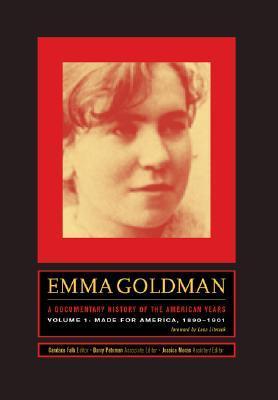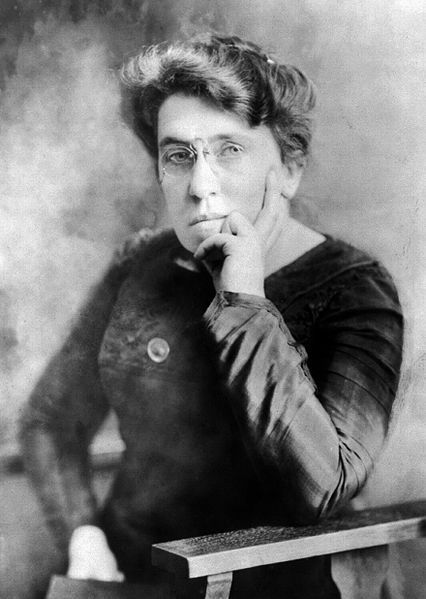
Emma Goldman: A Documentary History of the American Years redefines the historical memory of Emma Goldman and illuminates a forgotten yet influential facet of the history of American and European radicalism. This definitive multivolume work, which differs significantly from Goldman’s autobiography, presents original texts—a significant group of which are published in or translated into English for the first time—anchored by rigorous contextual annotations. The distillation of years of scholarly research, these volumes include personal correspondence, newspaper articles, government surveillance reports from America and Europe, dramatic court transcripts, unpublished lecture notes, and an array of other rare items and documentation. Biographical, newspaper, and organizational appendixes are complemented by in-depth chronologies that underscore the complexity of Goldman’s political and social milieu. The first volume, Made for America, 1890–1901, tracks the young Emma Goldman’s introduction into the anarchist movement, features her earliest known writings in the German anarchist press, and charts her gradual emergence from the radical immigrant circles of New York City’s Lower East Side into a political and intellectual culture of both national and international importance. Goldman’s remarkable public ascendance is framed within a volatile period of political violence: within the first few pages, Henry Clay Frick, the anti-union industrialist, is shot by Alexander Berkman, Goldman’s lover; the book ends with the assassination of President William McKinley, an act in which Goldman was falsely implicated. The documents surrounding these events shed light on difficult issues—and spark an important though chilling debate about Goldman’s strategy for reconciling her "beautiful vision" of anarchism and the harsh realities of her times. The documents articulate the force of Goldman’s rage, tracing the development of her political and social critique as well as her originality and her remarkable ability to synthesize and popularize cutting-edge political and cultural ideas. Goldman appears as a rising luminary in the mainstream press—a voice against hypocrisy and a lightning rod of curiosity, intrigue, and sometimes fear. The volumes include newspaper accounts of the speaking tours across America that eventually established her reputation as one of the most challenging and passionate orators of the twentieth century. Themes that came to dominate Goldman’s life—anarchism and its possibilities, free speech, education, the transformative power and social significance of literature, the position of labor within the capitalist economic system, the vital importance of women’s freedom, the dynamics of personal relationships, and strategies for a social revolution—are among the many introduced in Made for America.
Author

Emma Goldman was a feminist anarchist known for her political activism, writing and speeches. She played a pivotal role in the development of anarchist political philosophy in North America and Europe in the first half of the twentieth century. Born in Kovno in the Russian Empire (present-day Kaunas, Lithuania), Goldman emigrated to the US in 1885 and lived in New York City, where she joined the burgeoning anarchist movement.Attracted to anarchism after the Haymarket affair, Goldman became a writer and a renowned lecturer on anarchist philosophy, women's rights, and social issues, attracting crowds of thousands. She and anarchist writer Alexander Berkman, her lover and lifelong friend, planned to assassinate Henry Clay Frick as an act of propaganda of the deed. Although Frick survived the attempt on his life, Berkman was sentenced to twenty-two years in prison. Goldman was imprisoned several times in the years that followed, for "inciting to riot" and illegally distributing information about birth control. In 1906, Goldman founded the anarchist journal Mother Earth. In 1917, Goldman and Berkman were sentenced to two years in jail for conspiring to "induce persons not to register" for the newly instated draft. After their release from prison, they were arrested—along with hundreds of others—and deported to Russia. Initially supportive of that country's Bolshevik revolution, Goldman quickly voiced her opposition to the Soviet use of violence and the repression of independent voices. In 1923, she wrote a book about her experiences, My Disillusionment in Russia. While living in England, Canada, and France, she wrote an autobiography called Living My Life. After the outbreak of the Spanish Civil War, she traveled to Spain to support the anarchist revolution there. She died in Toronto on May 14, 1940, aged 70. During her life, Goldman was lionized as a free-thinking "rebel woman" by admirers, and derided by critics as an advocate of politically motivated murder and violent revolution.Her writing and lectures spanned a wide variety of issues, including prisons, atheism, freedom of speech, militarism, capitalism, marriage, free love, and homosexuality. Although she distanced herself from first-wave feminism and its efforts toward women's suffrage, she developed new ways of incorporating gender politics into anarchism. After decades of obscurity, Goldman's iconic status was revived in the 1970s, when feminist and anarchist scholars rekindled popular interest in her life.